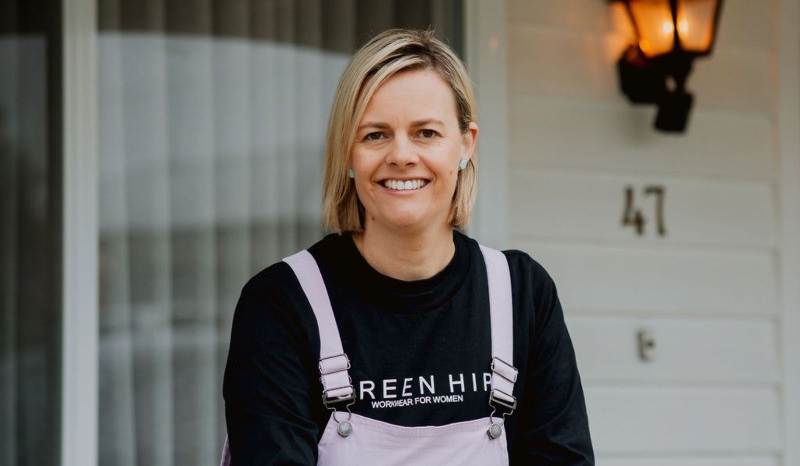Inflation has fallen, but one or two more interest-rate rises are still likely
- Written by John Hawkins, Senior Lecturer, Canberra School of Politics, Economics and Society, University of Canberra

Australia’s inflation rate has fallen from its 30-year high of 7.8% in the December quarter of 2022 to 7.0% in the March quarter of 2023. But it’s still likely the Reserve Bank of Australia will push up interest rates again before the end of the year to drive inflation back to its target range.
Contributing to the lower growth in the Consumer Price Index in the first three months of 2023 were lower costs for furniture, appliances and clothing.
Other prices rose, but by less than they have been. The price of new dwellings, for example. This is likely due to construction materials becoming more readily available along with softer demand.
Prices showing little change include petrol, which remains about the same as a year ago, following the Russian invasion of Ukraine in February 2022.
There are also some prices that have risen sharply.
Gas prices – also influenced by the Ukraine war – are up by 26% from the March quarter a year ago. Electricity prices are also higher, up 16% from a year ago.
There were also large rises in the price of university fees, up 9.6% from a year ago, and medical and hospital services, up 6.7%.
Read more: Inflation still the 'defining challenge' as economic activity slows[1]
The annual rise in average rents[2] was 4.9% – the highest since 2010, reflecting the low number of rental vacancies.
Even so, the increase in rents remained less[3] than the overall incrase in the Consumer Price Index.
To get a better idea of what would be happening were it not for some of the unusual and outsized moves, the Australian Bureau of Statistics calculates what it calls a “trimmed mean” measure of underlying inflation.
This excludes the 15% of prices that climbed the most in the quarter and the 15% of prices that climbed the least or fell. This gives a better idea of the underlying trend in inflation.
This measure, closely watched by the Reserve Bank, is now 6.6%.
Where is inflation heading?
Both the “headline” and “trimmed mean” measures are heading in the right direction, pointing to the success of ten consecutive interest rate rises in the past year in slowing the economy.
Inflation is likely to keep easing.
The supply-side issues from the COVID pandemic are largely resolved. Shipping costs have returned to pre-COVID levels, for example.
The big question now is how quickly inflation will ease, given it’s still well above the central bank’s target[4] of 2–3%.
What does this mean for interest rates?
As Treasurer Jim Chalmers said[5], “inflation has passed its peak” but “will still remain higher than we’d like for longer than we’d like”.
The Reserve Bank’s forecast[6] in February was that inflation would not drop to the 2–3% target before 2025. This assumed the projected decline may require one or two more[7] interest rate rises.
The March quarter result will probably not change this assessment.
Speeding up the process would require more interest rate rises. But the bank is balancing its inflation objective with the risk of higher interest rates sending the economy into recession.
Read more: The Lowe road – the RBA treads a 'narrow path'[8]
The Reserve Bank’s Governor Philip Lowe shared[9] the board’s view on this a few weeks ago. Addressing the National Press Club, he was asked why Australia wasn’t following other central banks in continuing to increase interest rates. He replied:
There’s an argument for that, but it would mean job losses – more job losses – and our judgement at the moment is that, if we can get inflation back to 3% by mid-2025 and preserve many of those job gains that have been delivered in the last few years, that’s a better outcome than getting inflation back to 3% one year earlier and having more job losses.
Today’s inflation data suggests the central bank will need no more than one or two further increases to keep inflation on its “narrow path” back to the target band.
References
- ^ Inflation still the 'defining challenge' as economic activity slows (theconversation.com)
- ^ rents (www.rba.gov.au)
- ^ less (theconversation.com)
- ^ central bank’s target (www.rba.gov.au)
- ^ Treasurer Jim Chalmers said (ministers.treasury.gov.au)
- ^ forecast (www.rba.gov.au)
- ^ one or two more (www.rba.gov.au)
- ^ The Lowe road – the RBA treads a 'narrow path' (theconversation.com)
- ^ shared (www.rba.gov.au)
Authors: John Hawkins, Senior Lecturer, Canberra School of Politics, Economics and Society, University of Canberra














